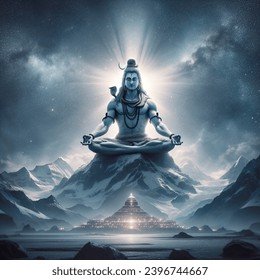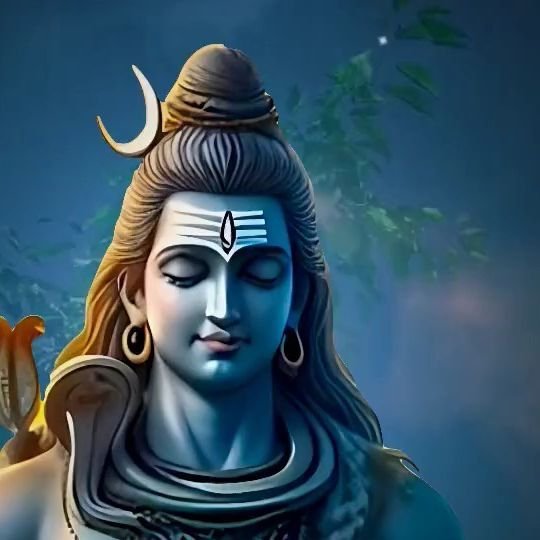

Lord Shiva, also known as Mahadeva, is one of the principal deities in Hinduism and forms part of the holy trinity (Trimurti) alongside Brahma, the creator, and Vishnu, the preserver. Shiva is revered as the destroyer and transformer, representing the cyclical nature of existence—creation, preservation, destruction, and regeneration. His worship transcends time and geography, making him one of the most prominent and universally adored figures in Indian spiritual traditions.
Iconography and Attributes
Lord Shiva is often depicted as a serene yet powerful ascetic seated in meditation or as a cosmic dancer performing the Tandava, the dance of destruction. His distinctive attributes include:
Third Eye (Trinetra): Symbolizing wisdom and inner vision, it is said to open during moments of intense wrath to destroy evil.
Crescent Moon (Chandrashekhara): Worn on his matted locks, it represents the cyclical nature of time and the calming of his fiery energy.
River Ganga: Flowing from his hair, it signifies purification and the life-giving force of nature.
Trishul (Trident): Representing the three aspects of existence—creation, preservation, and destruction.
Damru (Drum): Signifying the primal sound (Om) and the rhythm of the cosmos.
Snake (Vasuki): Coiled around his neck, symbolizing control over ego and worldly desires.
Epithets and Names
Shiva is addressed by countless names and epithets that reflect his various attributes and roles. Some of his prominent titles include:
Rudra: The fierce one.
Shankar: The benefactor or auspicious one.
Nataraja: The cosmic dancer.
Mahakaal: The lord of time and death.
Bholenath: The innocent lord, symbolizing his approachable and compassionate nature.
Family and Consort
Shiva’s consort is Goddess Parvati, also known as Shakti, representing divine energy. Together, they symbolize the union of masculine and feminine forces in the cosmos. Their children include:
Lord Ganesha: The remover of obstacles.
Kartikeya (Murugan): The god of war and victory.
Ashokasundari: A lesser-known daughter mentioned in some texts.
Sacred Texts and Stories
Shiva’s stories are woven into the fabric of Hindu scriptures:
Shiva Purana: Dedicated entirely to his life and teachings.
Mahabharata and Ramayana: Contain numerous references to his might and benevolence.
Hymns and Stotras: Such as the Shiva Tandava Stotram and Lingashtakam, glorify his divine qualities.
One of the most famous legends is the Samudra Manthan (churning of the ocean), where Shiva consumed the deadly poison (halahala) to save the universe, earning him the title Neelkanth (the blue-throated one).
Significance of the Shiva Linga
The Shiva Linga is the most common representation of Shiva in temples and shrines. It symbolizes the formless and infinite aspect of the divine. Worshipping the Linga involves rituals, offerings of water, milk, and bilva (bael) leaves, and meditation.
Philosophy and Devotion
Shiva is a central figure in various philosophical schools, including Shaivism, where he is considered the Supreme Being. His attributes embody the essence of detachment, inner peace, and transcendence. Devotees believe that meditating on Shiva leads to liberation (moksha).
Festivals
Shiva is celebrated with grandeur during:
Mahashivaratri: A night dedicated to intense worship and prayer.
Shravan Month: Considered auspicious for offering prayers to Shiva.
Lord Shiva’s appeal lies in his complex yet relatable persona—a fierce destroyer of evil, a loving husband and father, and an approachable, compassionate deity who embodies both the ascetic and the householder.